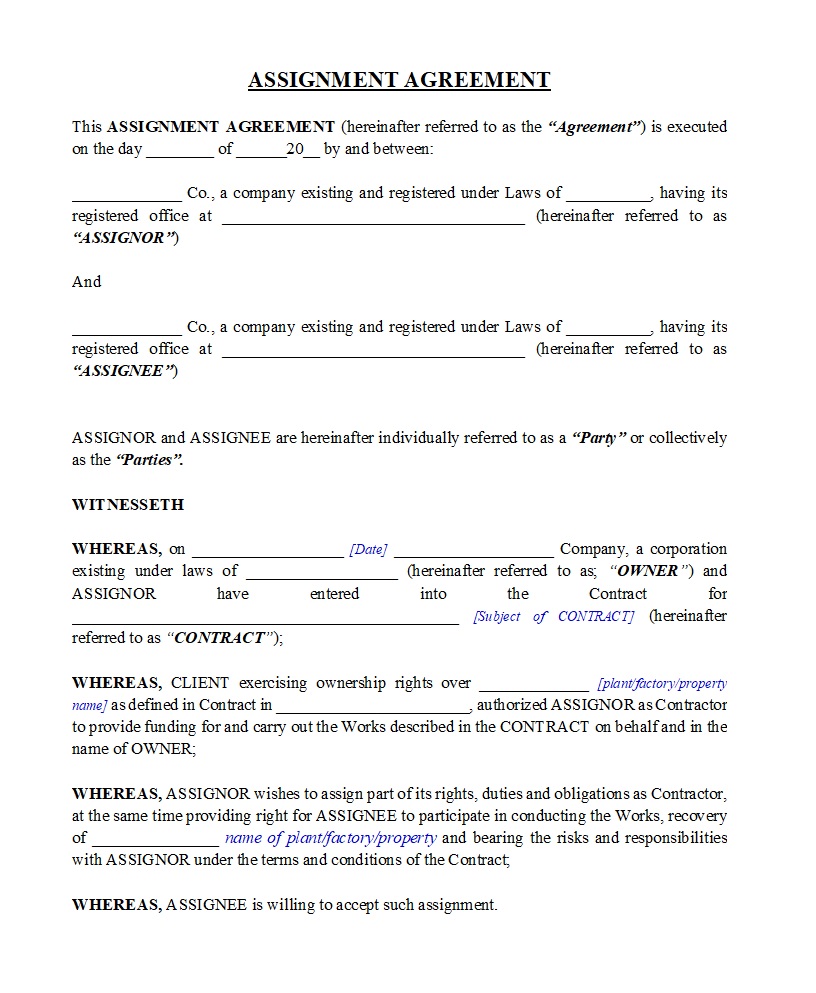In dynamic project environments—particularly in infrastructure, construction, and multi-stakeholder ventures—the assignment of contractual rights becomes essential for business continuity. A Project Contract Assignment Agreement enables one party (the assignor) to legally transfer its rights, benefits, and obligations under a project-related contract to another party (the assignee). This ensures that even amid internal restructuring, mergers, asset sales, or risk reallocation, the underlying project remains uninterrupted and contractually sound.

Structure and Legal Scope of the Agreement
This agreement clearly defines the assignor (original party transferring the rights), the assignee (new party assuming those rights and duties), and the counterparty (the other original contract participant who may need to consent). While the assignee steps into the assignor’s shoes, the agreement may also contain carve-outs—rights that remain with the assignor or are limited in scope.
The agreement must clarify:
- Scope of Assignment: Whether it includes rights only (e.g., right to receive payments), obligations (e.g., performance duties), or both.
- Consent Requirements: Whether the counterparty’s consent is legally or contractually required.
- Governing Law and Jurisdiction: To secure enforceability across jurisdictions.
Applications and Use Cases
Assignments are common in EPC contracts, concession agreements, BOT/BOOT structures, and IPP energy deals where the project developer may wish to transfer rights to a financier, SPV, or strategic partner. The assignment ensures uninterrupted contractual rights while enabling flexible project ownership, financing, or management transitions.
They are also used in distressed asset sales, portfolio reorganizations, or when an original contractor is replaced during project execution. In such cases, the assignment helps avoid re-contracting while preserving prior obligations.
Safeguards and Practical Considerations
A well-drafted Project Contract Assignment Agreement should:
- Reference the original contract clearly
- Include warranties regarding the assignor’s authority and the validity of the contract
- Confirm that no prior assignments exist
- Obtain express written consent from the counterparty if required
- Address post-assignment obligations, notices, and dispute resolution methods
Careful drafting ensures the assignee does not inherit unknown liabilities or obligations beyond the assigned scope. In high-value or government-linked projects, regulatory approvals may also be mandatory.
Conclusion
A Project Contract Assignment Agreement safeguards commercial continuity by allowing the controlled transfer of project rights and duties. It provides a strategic tool in project finance, restructuring, and long-term contract management.
Find the similar Agreement here: Assignment Agreement – 2
References
- OECD. (2025). Guidelines on Contractual Risk Transfer.
- International Trade Centre. (2023). Contract Management in Infrastructure Projects.
- FIDIC. (2017). Conditions of Contract for EPC Turnkey Projects (Silver Book).
Related Topics: #ProjectContracts #AssignmentAgreement #ConstructionLaw #FIDIC #ContractTransfer #ProjectFinance #PPP #InfrastructureLaw #LegalDrafting #ContractDirector
has been added to your cart!
have been added to your cart!



